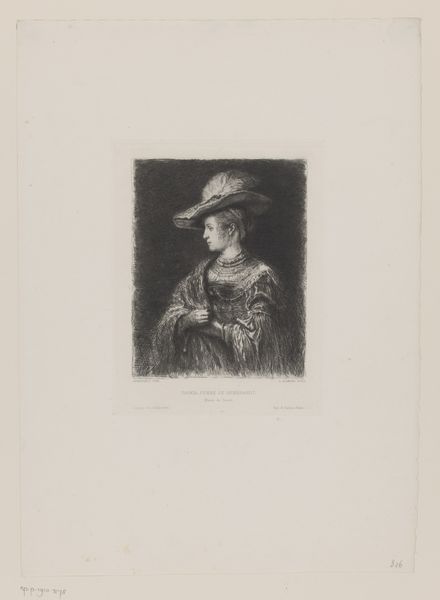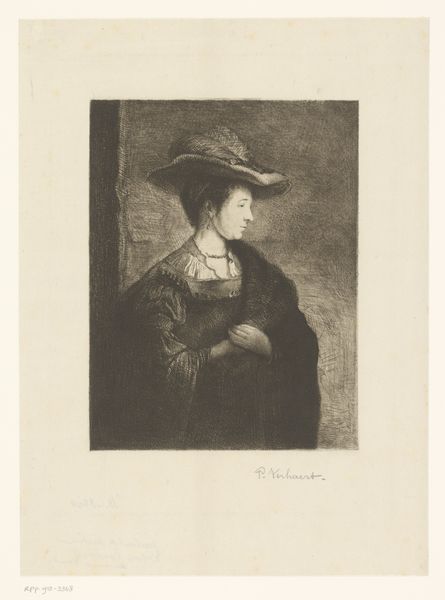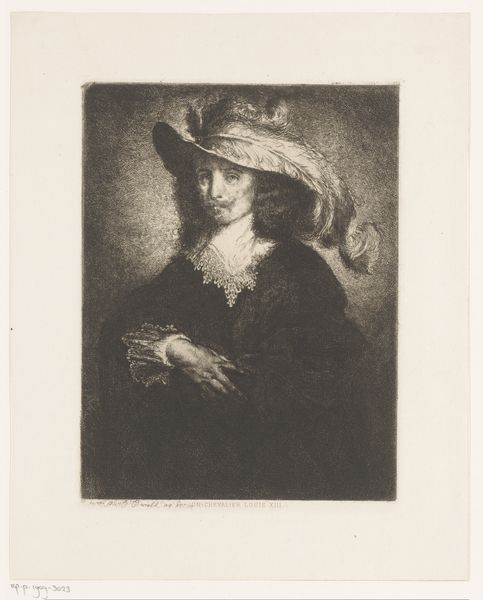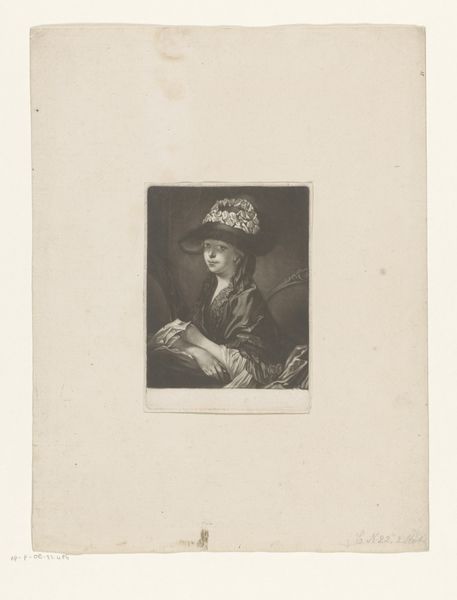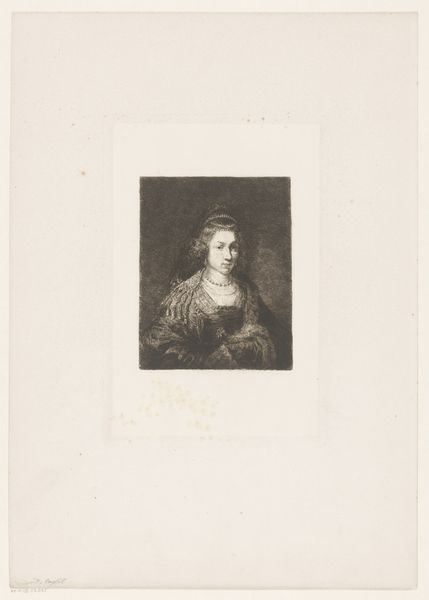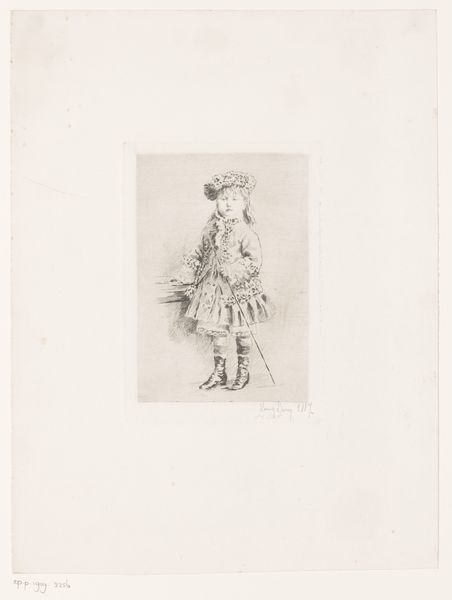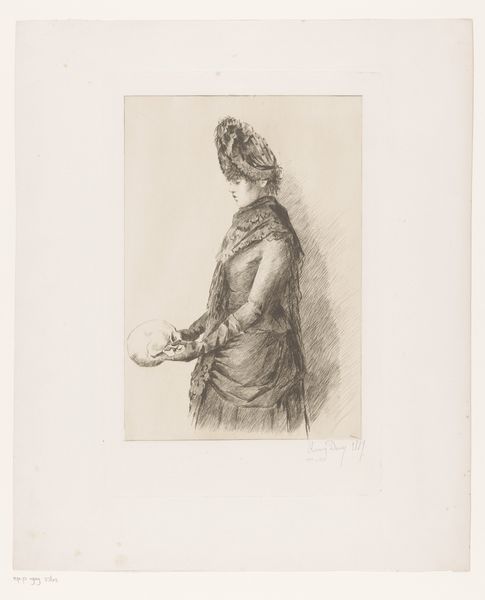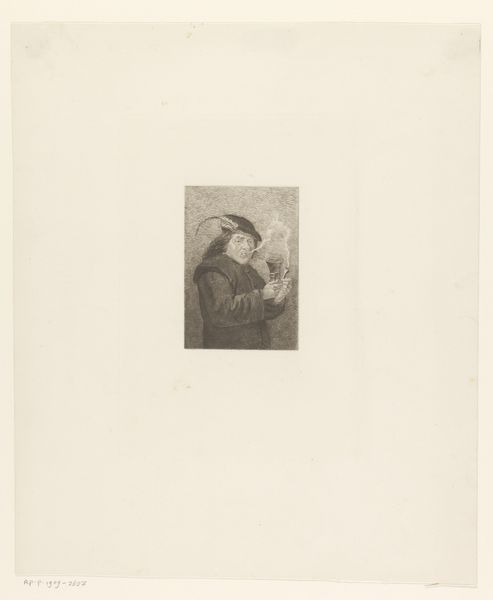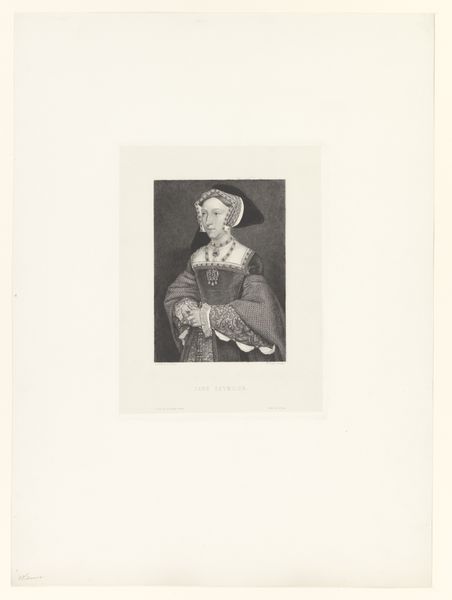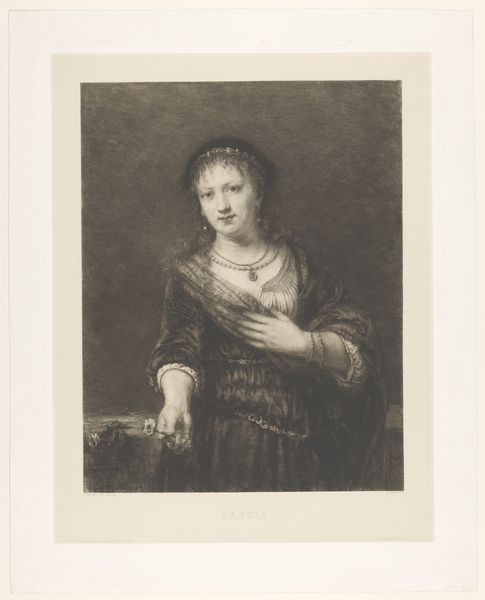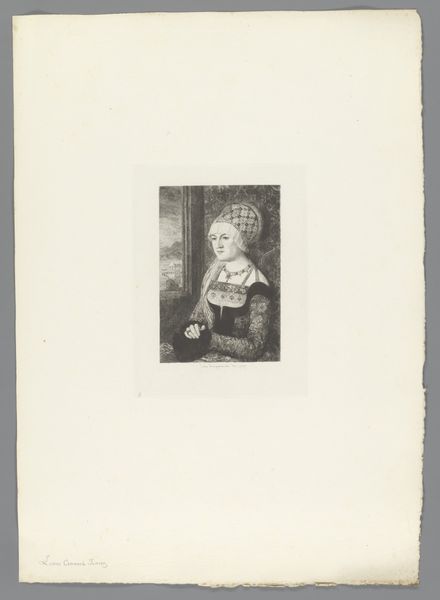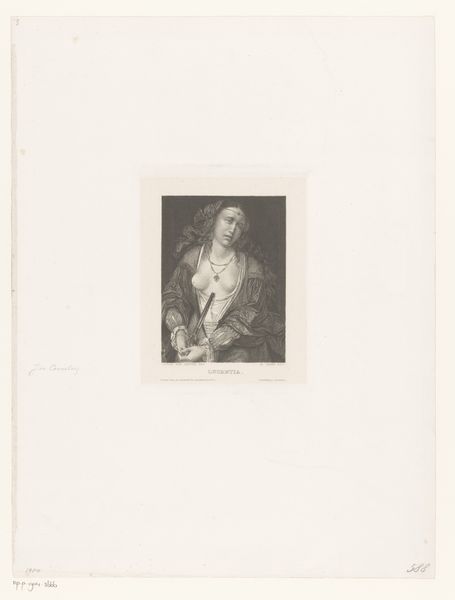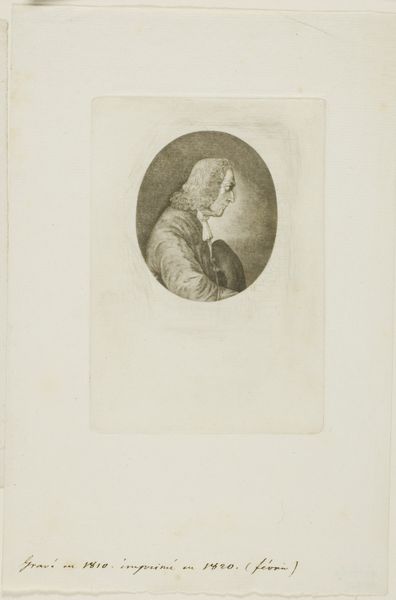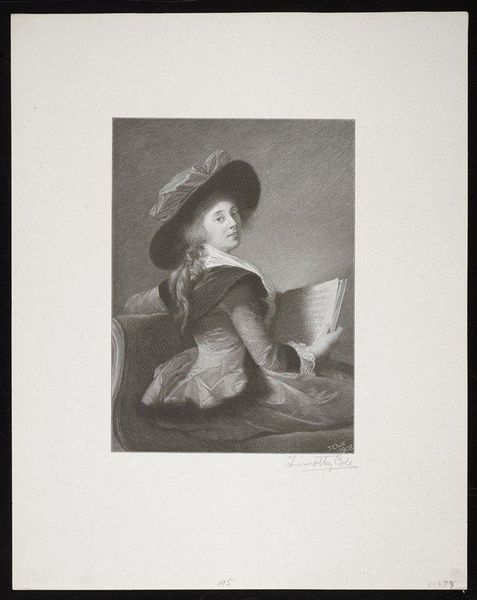
print, etching, engraving
#
portrait
#
dutch-golden-age
# print
#
etching
#
engraving
Dimensions: height 254 mm, width 173 mm
Copyright: Rijks Museum: Open Domain
Editor: So, this is William Unger's "Portret van Saskia van Uylenburgh," created sometime between 1847 and 1889. It's a print, using etching and engraving. The detail is incredible! She seems…contemplative, almost wistful. What strikes you most about this image? Curator: The feathered hat is the emblem of the Dutch Golden Age matron: flamboyant display atop her elegant control. Her dress, dark and heavy, and that single rose she clasps, represent cycles of life and renewal… or perhaps even its fleeting beauty. Editor: Fleeting beauty...That's interesting. I hadn't considered that. Why do you think Unger chose to recreate Saskia, so long after her death? Curator: Think of Saskia, not just as Rembrandt's wife, but as a symbol of idealized womanhood in Dutch society. The Dutch masters were rediscovering themselves after a period of political upheaval. Looking back offered a template: this is the symbolic imagery that has sustained us. What message does that offer Unger's 19th century audience? Editor: Perhaps a connection to a glorious past, reminding them of a time of prosperity and cultural dominance? But also a hint of melancholy given Saskia's early death? Curator: Exactly. Her gaze is directed away, but her presence echoes, like a figure in a half-remembered dream. Does her face reflect societal dreams of that time, or her own dreams that can no longer be fulfilled? Editor: It's like she embodies a memory, carefully preserved but ultimately intangible. It definitely adds another layer of depth. Curator: And don’t the symbols give her complexity beyond a typical portrait? Perhaps we idealize the past. Editor: Yes, absolutely. I'll definitely look at portraits differently now. Thanks!
Comments
No comments
Be the first to comment and join the conversation on the ultimate creative platform.
